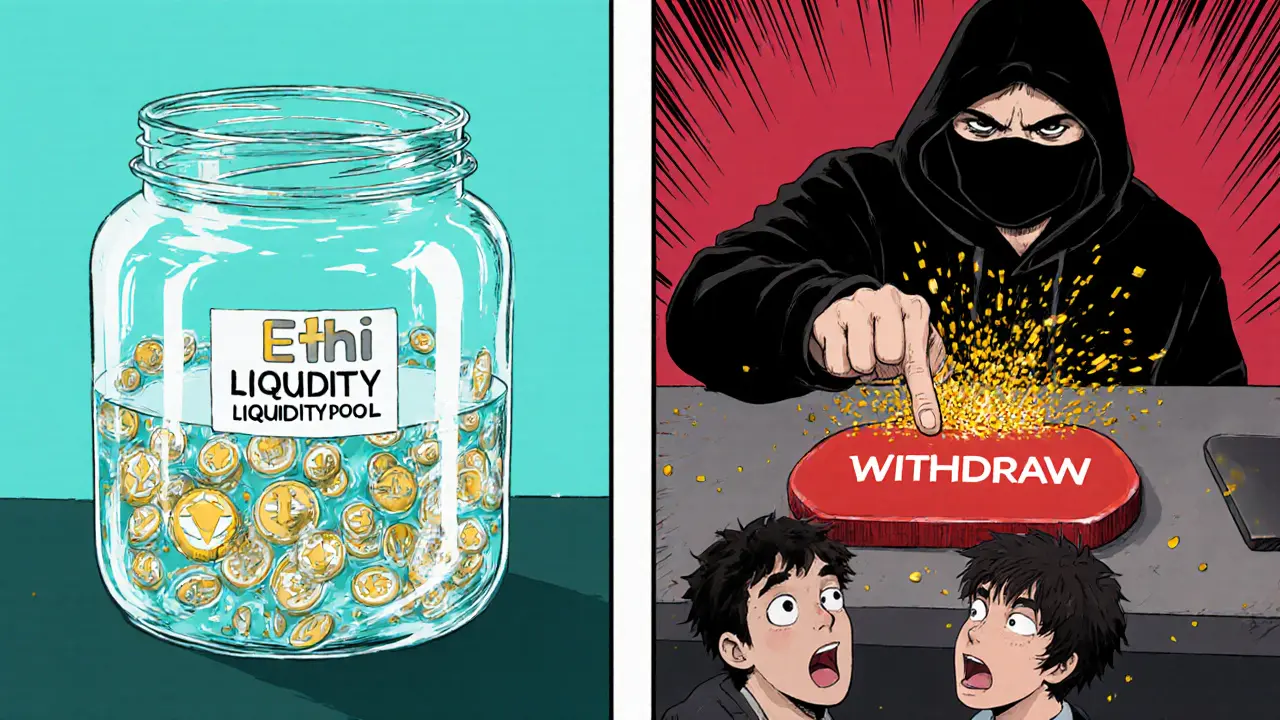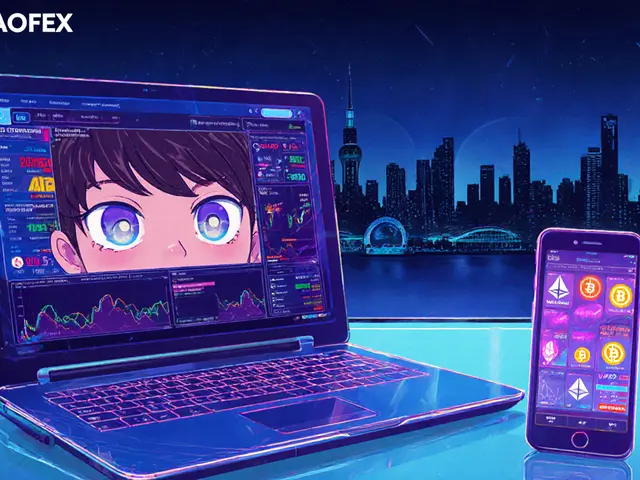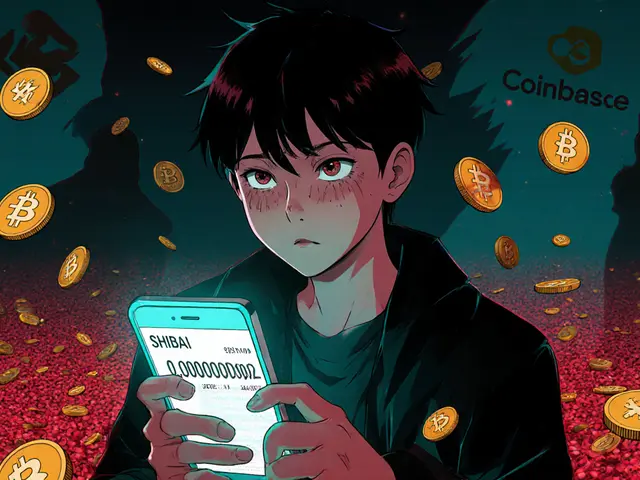Smart Contract Rug Pull Detection Guide
Liquidity Pull
The classic method where developers remove liquidity from the pool, leaving investors with worthless tokens.
Honeypot
A trap that allows purchases but blocks sales for most users, keeping liquidity in developer wallets.
Pump & Dump
Market manipulation involving coordinated buying followed by massive selling by insiders.
Comparison Table
| Feature | Liquidity Pull | Honeypot | Pump & Dump |
|---|---|---|---|
| Technical Complexity | Low | High | Medium |
| Detection Difficulty | Hard until execution | Possible via contract audit & test sells | Visible through token distribution analysis |
| Required Developer Skill | Basic Solidity | Advanced Solidity | Business & marketing savvy |
| Typical Loss Size | Millions+ | Hundreds-to-millions | Varies, often billions |
Red Flags to Watch For
- 1 Anonymous team or no team disclosure
- 2 No liquidity lock on exchange pools
- 3 Owner-only admin functions (withdraw, mint, setFee)
- 4 Concentrated token holdings (>50% in one address)
- 5 Unrealistic ROI claims or FOMO marketing
Protection Checklist
- Check the contract on Etherscan/BscScan for owner permissions
- Verify liquidity lock status (should be permanent)
- Test a small sell transaction (if it fails, likely a honeypot)
- Analyze token distribution for whale wallets
- Review audit reports from reputable firms
- Watch community sentiment (avoid hype-driven projects)
When a new token spikes overnight and then vanishes, investors often wonder what went wrong. The truth is that many of these collapses are engineered from the start: a rug pull hidden inside the token’s smart contract. Understanding how these scams operate, what red flags to watch for, and how to protect yourself can mean the difference between a profitable trade and a total loss.
What is a Smart Contract Rug Pull?
Smart Contract Rug Pull Mechanisms are pre‑programmed exit scams built into decentralized finance (DeFi) token contracts. Developers embed backdoors that let them drain funds the moment they decide to abandon the project. The term comes from the feeling of having the floor pulled out from under you - investors are left holding worthless tokens while the creators walk away with the pooled assets.
Three Core Rug Pull Techniques
Rug pulls don’t all look the same. They fall into three technical families, each exploiting a different part of the DeFi stack.
- Liquidity Pull - the classic “take the money out of the pool” move.
- Honeypot - a trap that lets you buy but not sell.
- Pump and Dump - a market‑timing scam that doesn’t need contract bugs.
Liquidity Pulls: The Straightforward Heist
Liquidity pulls dominate the rug‑pull landscape because they require the least programming finesse. The typical flow looks like this:
- Developers launch a token on a decentralized exchange such as Uniswap or PancakeSwap, pairing it with a stable asset like ETH or BNB.
- Initial liquidity is added to create a tradeable market. The pool’s token‑to‑ETH ratio determines the price.
- Heavy marketing drives investors to buy, inflating the token’s price and swelling the pool.
- When the pool is sufficiently funded, the creator calls the contract’s
removeLiquidityfunction (or a custom withdrawal routine). All paired ETH/BNB disappears instantly. - Investors are left with a token that has no market depth and a near‑zero price.
Because the removal call looks like a normal interaction with the exchange protocol, there’s often no warning until the funds are gone. Projects that skip liquidity locking - a practice where the pool’s assets are frozen for a set period - are especially risky.
Honeypots: The One‑Way Ticket
Honeypots are the most technically sophisticated rugs. They let buyers acquire tokens, but the contract blocks any sell transaction for everyone except a whitelist of developer wallets. The code typically includes a modifier such as onlyOwnerCanSell that checks the caller’s address against an internal list.
When a user attempts to sell, the transaction reverts with a custom error, leaving the tokens locked forever. The attacker, however, can sell at will, siphoning off the liquidity while the price appears healthy - a false sense of security that encourages more buying.
Real‑world examples like the SQUID token have shown how easily a honeypot can be concealed. Researchers at TRM Labs discovered explicit permission flags that only the developers could trigger, allowing them to drain funds after inflating the price via controlled buys.

Pump and Dump: The Market Manipulation Play
Unlike the other two methods, pump and dump scams don’t tamper with the contract’s core functions. Instead, they rely on tokenomics tricks and hype. Typical steps include:
- During launch, insiders allocate 70‑80% of the total supply to their wallets.
- A coordinated marketing blitz - often featuring influencers or even political figures - creates a fear‑of‑missing‑out (FOMO) surge.
- The price spikes as retail investors scramble to buy.
- Insiders execute massive sell orders, flooding the market and crashing the price.
The recent LIBRA token incident, promoted by Argentine President Javier Milei, follows this exact script. Insiders reportedly held 82% of the supply and extracted over $107million before the token fell 95% in hours.
Comparing the Three Rug Pull Types
| Feature | Liquidity Pull | Honeypot | Pump & Dump |
|---|---|---|---|
| Technical complexity | Low - basic removeLiquidity call |
High - custom sell restrictions | Medium - tokenomics design & marketing |
| Detection difficulty | Hard until execution | Possible via contract audit & test sells | Visible through token distribution analysis |
| Required developer skill | Basic Solidity | Advanced Solidity | Business & marketing savvy |
| Typical loss size | Millions‑plus | Hundreds‑to‑millions | Varies, often billions in aggregate |
| Common red flags | No liquidity lock, owner‑only withdraw | Sell function reverts, whitelist only | Insider wallet >50%, unrealistic promises |
Technical Warning Signs to Spot Early
Even if you’re not a Solidity expert, a few concrete checks can save you from becoming a victim:
- Anonymous team: Legitimate projects usually disclose core developers or at least link to verified GitHub accounts.
- Liquidity not locked: Use services like TrustSwap or Unicrypt to verify lock periods. No lock = higher pull risk.
- Owner‑only admin functions: Look for functions named
withdraw,mint, orsetFeethat are restricted to the deployer. - Concentrated token holdings: If a single address controls >50% of supply, expect a dump.
- Unrealistic ROI claims: Promises of "10x returns in a week" without a clear product are classic bait.
Tools like Etherscan’s contract reader, BscScan audit tabs, and open‑source scanners (e.g., MythX) can reveal many of these red flags with a few clicks.
Real‑World Victim Stories
Community forums such as r/DeFi and Discord groups are full of first‑hand accounts. One user described buying into the SQUID token after a flashy Twitter campaign, only to discover they couldn’t sell after a few days. The contract kept reverting with a generic "Transaction failed" message. Another investor recounted the LIBRA crash: they bought at $0.12, watched the price soar to $2.00, then saw their balance evaporate as insiders dumped billions in a single block.
These anecdotes highlight not just financial loss but also the psychological blow. Many victims report losing trust in new projects altogether, making due‑diligence even more critical for any future forays.
How the Industry is Fighting Back
Because rug pulls exploit the open nature of blockchains, regulators struggle to intervene directly. Instead, the ecosystem is building technical defenses:
- Automated detection bots: Services monitor new token contracts for owner‑only withdrawal permissions and flag them on platforms like Token Sniffer.
- Liquidity lock verification: Websites aggregate lock status, showing a green check when funds are truly frozen.
- Community‑driven audit platforms: Users can submit contracts for free reviews, leveraging crowdsourced expertise.
- Real‑time monitoring: Smart‑contract event listeners alert investors when large withdrawals happen, giving them a chance to exit before the pool empties.
These tools aren’t foolproof, but combined with personal diligence they raise the cost of pulling a rug significantly.
Practical Steps to Protect Yourself
- Check the contract on Etherscan/BscScan. Look for a
owneraddress and see if any functions are limited to it. - Verify liquidity lock status. If the lock expires within weeks, stay away.
- Run a quick sell test on a small amount. If the transaction reverts, it could be a honeypot.
- Analyze token distribution. Use token holder charts to spot whale wallets.
- Read the audit report. Reputable firms like CertiK, Quantstamp, or OpenZeppelin publish findings.
- Watch the community. If most discussion focuses on hype rather than tech, be skeptical.
Following this checklist can dramatically lower your exposure to the three main rug‑pull mechanisms.
Looking Ahead: The Future of Rug Pulls
Scammers continuously adapt. We’re already seeing hybrid schemes that combine a liquidity pull with a honeypot, making detection even harder. As AI‑driven code generators become mainstream, the barrier to writing sophisticated malicious contracts will drop.
At the same time, the industry’s defensive tools are gaining sophistication. Expect more AI‑based contract auditors, cross‑chain monitoring, and legal frameworks that hold developers personally liable for malicious code. Staying informed and using a layered defense will remain the best strategy.
Frequently Asked Questions
What exactly is a liquidity pull?
A liquidity pull is when the token creator calls a function (usually removeLiquidity) on a decentralized exchange pool, draining the paired asset (ETH, BNB, etc.) and leaving token holders with a worthless asset.
How can I tell if a token is a honeypot?
Test a tiny sell transaction. If the contract reverts with a custom error and the token balance stays the same, it’s likely a honeypot. Audits that show whitelisted sell permissions are a strong indicator as well.
Why do pump‑and‑dump scams still happen if they don’t need contract bugs?
They exploit human psychology. By creating massive hype and concentrating token supply in insider wallets, scammers can inflate price quickly and then dump at profit. The lack of technical tricks makes them easier to launch, but they rely heavily on coordinated marketing.
Are liquidity locks enough to guarantee safety?
Locks raise the bar but don’t guarantee safety. A malicious developer could still create a backdoor that withdraws after the lock period or use a compromised lock contract. Combine lock verification with contract audit and distribution analysis for better protection.
What role do services like TRM Labs play?
Research firms such as TRM Labs investigate on‑chain activity, identify suspicious permissions, and publish detailed reports (e.g., the SQUID token analysis). Their findings help investors spot red flags before committing capital.







Cathy Ruff
October 12, 2024 AT 03:08Everyone keeps falling for these obvious rug pulls because they never read the contract.
Kortney Williams
October 18, 2024 AT 07:38It's funny how quickly hype can drown out basic due‑diligence. I often find myself stepping back and asking why a project would hide an owner‑only withdraw function. The lack of a transparent team is another red flag. In the end, a calm, methodical approach beats chasing FOMO every time.
Taylor Gibbs
October 24, 2024 AT 12:08Look, i get the panic but you really need to check the contract on etherscan before you throw in any money. its not that hard to see if there's a withdraw only for the deployer. a quick glance can save you from getting rugged.
Amy Harrison
October 30, 2024 AT 16:38Great rundown! 🌟 The checklist you posted is exactly what I keep in my notes before diving into any new token. If anyone's unsure, just follow those steps and you’ll dodge most scams. Keep the good vibes coming!
Miranda Co
November 5, 2024 AT 21:08Seriously, if a token’s liquidity isn’t locked for at least a month, walk away. I’ve seen too many people get burned because they ignored that simple rule. The community should call out these projects ASAP.
Katherine Sparks
November 12, 2024 AT 01:38Thank you for compiling such a thorough guide. I apologise for any typos, but the information is solid and will surely aid many investors in their research. The inclusion of real‑world examples adds great context.
Jenise Williams-Green
November 18, 2024 AT 06:08While the guide is comprehensive, let’s not forget that scammers evolve faster than we can document. The drama of a sudden liquidity pull is all too familiar, yet many still ignore the glaring signs. It’s almost theatrical how the same patterns repeat, and we, the audience, keep buying tickets. Honestly, it’s a moral failing to keep funding projects that hide their ownership.
Laurie Kathiari
November 24, 2024 AT 10:38Ah, the classic chorus of self‑righteousness that masks a deeper complacency. One might argue that calling out every rug pull is noble, yet it often just fans the flames of the next scam. Fancy words aside, the reality is simple: many investors prefer the illusion of safety over the effort of verification. The drama is palpable, but the stakes are real.
Promise Usoh
November 30, 2024 AT 15:08When examining the anatomy of a rug pull, it is essential to consider both technical and psychological vectors that perpetrators exploit. The first vector is the manipulation of contract permissions; through functions such as
onlyOwneror custom modifiers, developers retain unilateral control over tokenomics. Second, the absence of an immutable liquidity lock creates a temporal vulnerability that can be triggered at the perpetrator’s discretion. Third, token distribution analytics often reveal concentration of ownership, where a single address holds a disproportionate share of supply, signalling potential dump risk. Fourth, marketing narratives that promise unrealistic returns serve as a lure, inflating demand without substantive utility. Fifth, the community’s echo chamber effect amplifies hype, drowning out critical scrutiny. Sixth, the reliance on decentralized exchanges for price discovery means that liquidity can be drained without a centralized authority intervening. Seventh, automated bots scan for signature patterns-such as owner‑only withdrawal functions-and flag projects, yet these bots are not foolproof. Eighth, the legal gray area surrounding smart contracts permits developers to evade jurisdiction, complicating recourse. Ninth, the rapid development of cross‑chain bridges introduces new attack surfaces where assets can be moved stealthily. Tenth, the integration of governance tokens can mask malicious code behind legitimate voting mechanisms. Eleventh, the proliferation of audit firms has improved security, but not all audits are comprehensive, and some are merely cosmetic. Twelfth, community driven “audit‑by‑the‑crowd” can catch anomalies missed by formal audits. Thirteenth, the psychological effect of FOMO drives investors to bypass due diligence. Fourteenth, the lack of insurance mechanisms in DeFi makes losses irreversible. Fifteenth, the emergence of AI‑generated contract code lowers the barrier for sophisticated exploit creation. In sum, a multi‑layered approach-combining technical analysis, community vigilance, and prudent risk management-is required to mitigate these threats.Shaian Rawlins
December 6, 2024 AT 19:38Having read the extensive analysis, I feel compelled to emphasize that each of those fifteen points can be checked with publicly available tools. For instance, using Etherscan’s contract viewer you can spot owner‑only functions instantly, while token holder charts on platforms like Dune reveal concentration. Moreover, Liquidity lock services such as Unicrypt provide immutable proof of lock status. By systematically applying these steps, an investor can transform what appears to be a daunting checklist into a manageable routine. The psychological component-resisting FOMO-is perhaps the toughest, but community reminders and setting personal loss limits help. Ultimately, knowledge plus disciplined action forms the best defense.
Rob Watts
December 13, 2024 AT 00:08Do it, check the contract, lock the liquidity.
Bhagwat Sen
December 19, 2024 AT 04:38Sure thing, but remember that the moment you click ‘approve’ you might be handing over control. A quick glance at the owner address can save hours of regret.
mukesh chy
December 25, 2024 AT 09:08Oh great, another “check the owner” reminder. As if nobody’s already doing that while they’re busy chasing moonshots.
Natalie Rawley
December 31, 2024 AT 13:38Drama alert! If you think checking the owner is overkill, just wait until the token crashes and you’re left holding dust. Trust me, the sting is real.
Scott McReynolds
January 6, 2025 AT 18:08I love how these guides bring clarity to a space that often feels like a maze. By following the checklist, you essentially build a safety net that catches most of the low‑effort scams. It also encourages a culture where thoroughness becomes the norm rather than the exception. When the community collectively adopts these habits, the incentive for developers to launch rug pulls diminishes. That said, no system is foolproof; resilience comes from continuous learning and sharing experiences. So keep the conversation alive, share your findings, and let’s make DeFi safer together.
John Corey Turner
January 12, 2025 AT 22:38Indeed, adding a layer of communal knowledge is critical. Have you considered integrating a community‑scored risk metric into the checklist? Something like a ‘rug‑pull probability score’ could give newcomers an at‑a‑glance risk indicator.
Kimberly Kempken
January 19, 2025 AT 03:08If you all think a simple checklist will stop bad actors, you’re naive-scammers will always find a new loophole.